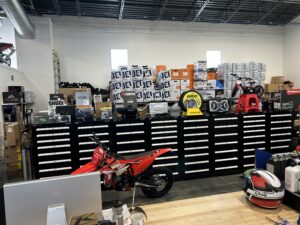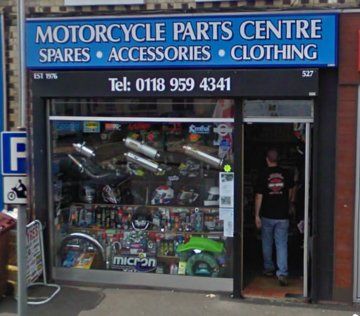See Our Motorcycle Shop for Professional Recommendations and High Quality Products
See Our Motorcycle Shop for Professional Recommendations and High Quality Products
Blog Article
A Comprehensive Consider Motorbike Parts: What Every Motorcyclist Must Know
An extensive understanding of bike components is not simply advantageous however essential for any cyclist intending to maximize efficiency and safety and security. Each component, from the engine's intricate functions to the dependability of brake systems, plays a critical duty in the overall experience and performance of the bike. Nonetheless, beyond just understanding what these parts do, it is necessary to value just how they support and engage each other. This interconnectedness can make the distinction in between a smooth experience and unanticipated issues. What complexities exist within this mechanical harmony that every cyclist should understand?
Understanding the Engine
The engine, often regarded as the heart of a motorbike, is a complicated setting up of components that operate in consistency to convert gas right into motion. At its core, the engine's primary function includes the combustion procedure, where air and fuel mix and spark within the cylinders, resulting in regulated surges that drive the pistons. These pistons go up and down, converting chemical energy right into power, which consequently transforms the crankshaft, inevitably powering the bike.

Comprehending the ins and outs of a motorbike engine is vital for fanatics and cyclists alike. It not just offers understanding into exactly how motorcycles achieve their remarkable power and rate yet also help in effective upkeep and troubleshooting, making certain long life and dependability on the roadway.
Suspension Solutions
While the engine powers the bike, the shock absorber plays an essential function in guaranteeing a smooth and controlled experience. The suspension system is accountable for taking in shocks from the road surface area, preserving tire get in touch with, and offering stability during cornering and braking. It makes up two major components: the front forks and the rear shock absorbers.
Front forks are usually telescopic, moistening and consisting of a springtime mechanism. The spring expands and compresses to absorb bumps, while the moistening mechanism controls the movement to avoid too much jumping. This mix ensures the front wheel continues to be touching the roadway, supplying premium handling and convenience.
The rear suspension, usually a monoshock or twin-shock arrangement, functions likewise to the front suspension yet is tailored to support the motorcycle's weight and rider - mx parts nz. It takes care of rear wheel movement, adding to the bike's general balance and responsiveness
Shock absorber can be adjustable, permitting bikers to adjust preload, compression, and rebound settings according to individual preferences and riding problems. This adjustability improves performance by enhancing the motorcycle's communication with diverse surfaces. In recap, an efficient suspension system is critical for biker convenience, security, and the bike's taking care of prowess.
Brake Elements
Stopping power is a basic facet of bike security, and it rests on the performance of the brake parts. The key elements of a motorbike's stopping system consist of the brake pads, calipers, blades, and master cylinder. motocross parts nz. Each of these parts plays a crucial duty in guaranteeing reliable braking performance
Brake pads are necessary as they develop the essential rubbing against the rotors to reduce down or stop the motorcycle. Created from products such as sintered metal or natural compounds, the option of brake pad material significantly impacts efficiency and durability. Calipers, housing the brake pads, apply pressure to the pads when the brake bar is engaged, helping with call with the blades.
The directory rotors, generally made from stainless steel or cast iron, are mounted to the wheels and act as the surface against which the brake pads press. Their layout, consisting of diameter and density, impacts heat dissipation and stopping power. The master cyndrical tube, attached to the brake lever, generates hydraulic stress sent via brake lines to the calipers, making certain constant braking force.
Normal upkeep and evaluation of these parts are important for optimal efficiency, protecting against wear and ensuring motorcyclist safety when driving.
Tire Basics
Beyond preserving durable stopping systems, ensuring ideal tire efficiency is just as significant for bike security and performance. Tires are the sole contact point in between the road and the motorbike, making their problem crucial in handling, security, and overall trip quality. Choosing the suitable tire type is crucial, as it directly influences traction and efficiency. Alternatives vary from touring to sport tires, each developed to suit particular riding styles and conditions.

In addition, take into consideration the tire's age. Rubber compounds degrade gradually, even if tread shows up sufficient. Inspect the sidewall for the DOT (Division of Transport) code to identify the tire's age. Typically, replacement is recommended every five years, despite wear. Investing focus in these tire basics not only maximizes performance however additionally substantially enhances riding security.
Electric Equipments
In the world of motorbike maintenance, the electrical system plays an important function in ensuring trustworthy efficiency and cyclist safety. This elaborate network includes crucial components such as the battery, alternator, starter motor, and wiring harness. Each element is important for the seamless procedure of the bike, from ignition to lighting and interaction with various sensors.
The battery serves as the heart of the electric system, offering the needed power to begin the engine and run accessories. Routinely examining the battery's voltage and terminals for deterioration is critical to avoid unanticipated failings. The generator, on the other hand, recharges the battery while the engine is running, making sure a constant power supply.
The starter motor is in charge of motorbike phone holder waterproof initiating engine operation, transforming electric power into mechanical energy. To keep it, motorcyclists must pay interest to any type of unusual sounds or troubles during startup. At the same time, the electrical wiring harness serves as the vehicle's worried system, connecting all electric elements. Guaranteeing that the wires are free and undamaged from damage is vital for ensuring and protecting against short circuits capability.
Final Thought

Quiting power is a basic element of motorbike safety and security, and it pivots on the performance of the brake components. The primary elements of a motorcycle's stopping system consist of the brake pads, calipers, rotors, and master cyndrical tube.Brake pads are important as they create the essential rubbing against the blades to reduce down or stop the motorcycle.Beyond maintaining durable braking systems, making sure optimum tire efficiency is similarly significant for bike security and efficiency.In the world of motorbike maintenance, the electric system plays a crucial duty in making certain trusted efficiency and biker safety.
Report this page